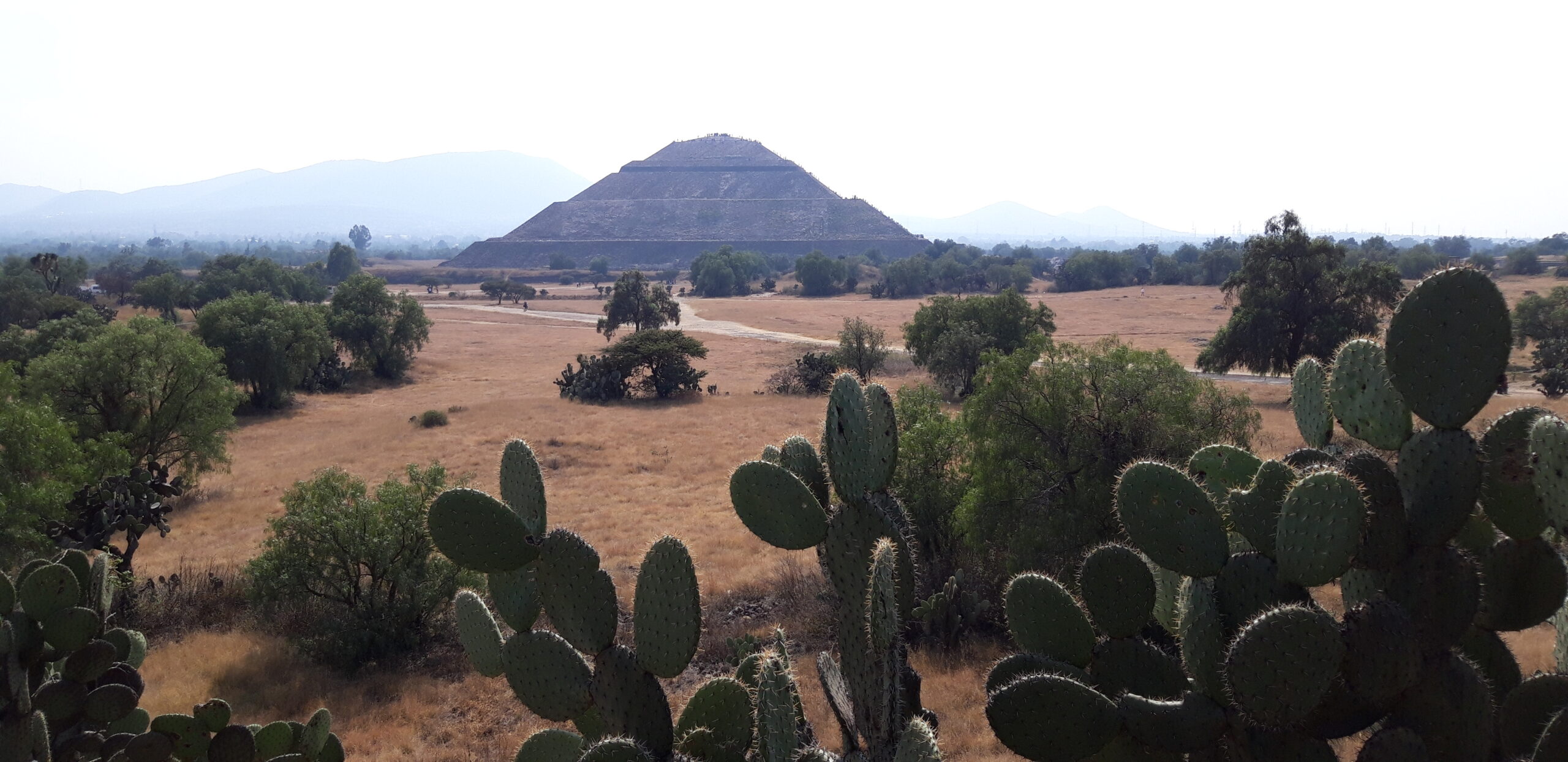Teotihuacan, a UNESCO World Heritage site situated in the central Mexican highlands, is the urban center of one of the most impressive archaeological cultures of the World. The ancient site can be imagined as a place full of music and sounds, a sonic environment that has been buried for a very long time. Along with its pyramids and temple structures covered by earth and vegetation the noises of everyday life ceased, the music was gone. A multisensory scientific-artistic endeavor, the Teotihuacan Virtual Sound Mapping Project, was designed to break the silence of the site. The soundwalk gathers what has been recovered so far. Musical improvisations are played on original sound artefacts and reconstructions, and the sonic impressions include field recordings of Teotihuacan soundscapes.
Credits
This Soundtrail received grant funding from the European Union (Grant agreement ID: 846012)
Produced in 2022 by Adje Both and Simon Bradley
Copyright by Adje Both and Simon Bradley (2022)
Teotihuacan instruments you hear: Shell horns (*), ceramic trumpets (*), quadruple flutes (* / **), ocarinas and whistles (*), whistling vessels (* / ***), gourd rattles and ceramic rattles (* / ***), shell rattles and bone rasps (*), turtle shells (*), slit-drums and skin drums (* / ** / ***)
Performers: * Adje Both / ** Mateusz Wysocki / *** Amon Jan Both
Original instruments: Recorded in 2019-2022 in the Museo Nacional de Antropología, Mexico City. Special thanks to Edgar Ariel Rosales de la Rosa and José Francisco García Rico
Instrument reconstructions: Made between 2019-2022 by Osvaldo Padrón Perez and Adje Both
Soundscapes: Recorded in 2022 at Teotihuacan and the Cerro Gordo
Recordings: Made between 2019-2022 by Adje Both (originals, reconstructions, soundscapes), José Francisco García Rico (originals), Hendrik Mokry (reconstructions), Jacek Szczepanek (reconstructions), Rupert Till (originals, reconstructions, soundscapes)
Voices: Tonwelt, Berlin (2022)
Sound design: Simon Bradley (2022)
Special thanks to: Yolotzin Vargas



One thought on “Sounds of Teotihuacan”